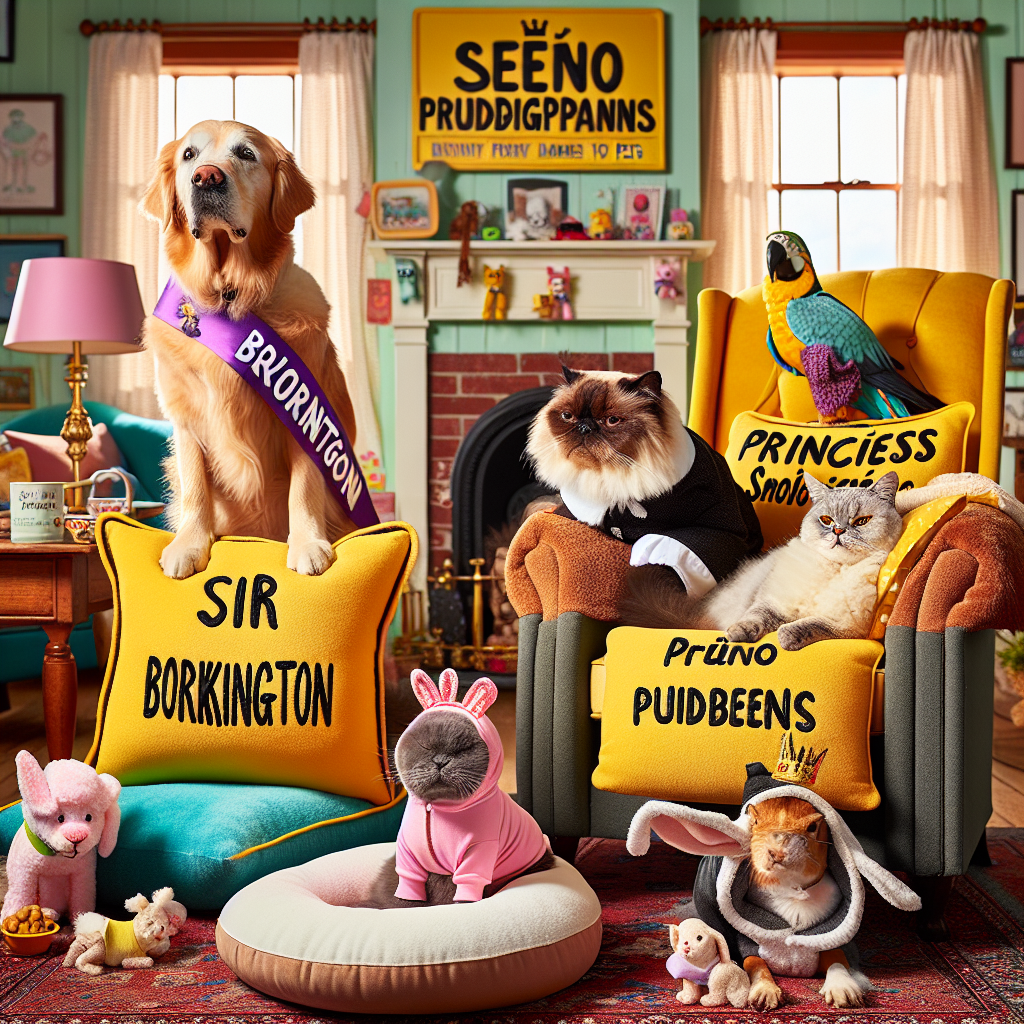Sit, stay, and tune in — because today’s tale is a tail-wagger!
Ever called your cat “Captain Whiskerflop” or referred to your dog as “Sir Borkington of Barkshire”? Maybe your hamster answers to “Peanut Buttinski” on Tuesdays and “Turbo Toebeans” on Wednesdays. Don’t worry — you’re not losing your marbles (or your tennis balls). In fact, science says this adorably strange habit of renaming our pets might just be one of the most heartwarming quirks of being human.
According to the latest findings from enthusiastic linguists and behavioral scientists, these peculiar pet nicknames aren’t as random as a squirrel on espresso. They’re rooted in how we play with language, how we form emotional bonds, and — wait for it — how we bring animals squarely into the heart of our families.
I sniffed out the details for you, and let me tell you, it’s pawsitively fascinating!
Let’s dig into the numbers (no bone required): Researchers have found that pet owners naturally gravitate toward silly, often nonsensical nicknames for their furry, feathery, or scaly companions. Think “Snuggle Fuzz,” “Doodle McNoodle,” or “Señor Snoofioso” (a personal favorite — rolls off the tongue like a treat off the counter!). What starts as “Charlie” might morph into a whole symphony of names, like “Chuckles,” “Chooch,” or “Mister Cuddlehoof.”
Why? Because, as linguist and sound expert Dr. Flora McMews tells National Geographic, using playful language activates joy centers in our brain. We’re not just labeling our pets — we’re crafting whole characters, tiny fur-cloaked members of our tribe. This “pet name jazz” lets us deepen our connection while also delighting in the musicality of made-up words. Basically, every “Booperoonidog” or “Fluff-A-Duck” is a tiny masterpiece of affection.
To translate that into tail-wagging terms: The sillier the name, the stronger the bond.
And oh my whiskers, do our pets notice. While your golden retriever might not know why you started calling him “Butternugget Supreme,” he’ll definitely wag harder when he hears it — because, like any good nickname, it’s dipped in love and glazed with treats. (Don’t quote me on that recipe.)
But perhaps the most bark-tastic insight of all? This phenomenon isn’t limited to one species. Parrots, bunnies, even betta fish end up with personas bigger than their bowls. “Mr. Splashypants,” anyone? Yes, even internet-famous whales got the nickname treatment, and it worked — in one case, raising global awareness for ocean protection efforts. That’s the power of playful words!
And here’s a little extra kibble of knowledge: Using repetitive sounds like “-y” or “-oo” at the end of names (think “Bootsy,” “Mochi,” or “Gooboo”) taps into the same linguistic patterns we use when speaking to babies. It’s instinctual, it’s nurturing — and it solidifies the idea that pets are kin.
So, next time someone side-eyes you for calling your cat “Princess Puddingpants,” just remember — you’re engaging in a joyful expression of love, science-approved and tail-thumpingly wholesome.
Now, I’ve got a poodle named Waffle Sprinkles to interview, but before I trot off, tell me: What’s the weirdest nickname you’ve ever given your pet? Share it in the comments — bonus points for creative consonants!
And don’t fur-get:
Let’s paws and appreciate nature, one squeaky nickname at a time.
– CryptoTheDoggy 🐾










